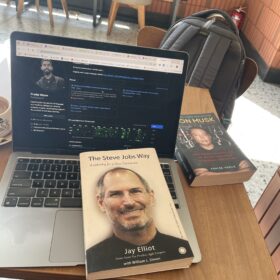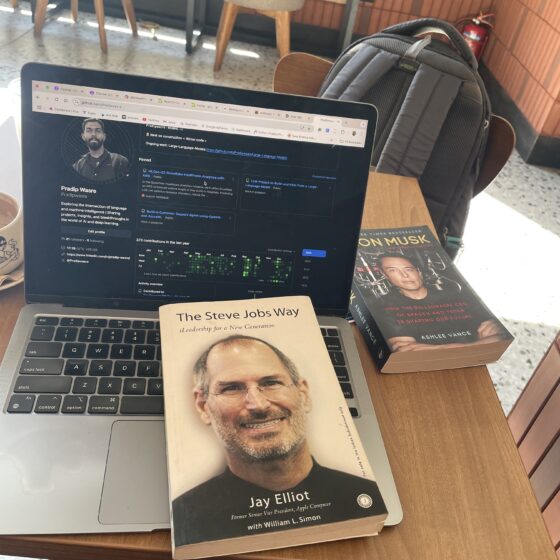Week 5, Day 4: Implementing RAG Pipelines with LangChain
Day 4 of Week 5 dives deep into implementing Retrieval-Augmented Generation (RAG) pipelines by leveraging LangChain’s advanced abstractions and tools. This session focuses on understanding the key building blocks of LangChain and tying them together to create a highly accurate and cost-efficient question-answering system. Below, we’ll break down the day’s learning into theoretical concepts and practical applications.
Understanding Key Abstractions in LangChain
LangChain simplifies the development of complex pipelines by providing structured abstractions. Three fundamental components were explored today:
1. LLM (Large Language Model)
- Role: The LLM is the core reasoning engine in the pipeline. It generates coherent and contextually relevant outputs based on user queries and retrieved knowledge.
- Example in RAG: OpenAI’s GPT-4o-mini model was chosen for its cost-efficiency and robust performance.
- Important Parameters:
- Temperature: Controls creativity; lower values make responses more deterministic.
- Model Name: Specifies the specific language model to use.
- Consideration: Choose an LLM that balances cost and accuracy for production-grade systems.
2. Retriever
- Role: The retriever searches for relevant chunks of data from the vector database to provide the LLM with focused context. Instead of relying on the LLM’s training data alone, the retriever ensures up-to-date and domain-specific information is utilized.
- How it Works: It interfaces with the vector database (e.g., Chroma) to fetch the most relevant embeddings.
- Consideration: The quality of the retriever determines how well the LLM answers domain-specific queries.
3. Memory
- Role: Memory enables the system to maintain the conversation context. This is crucial for creating interactive and coherent chat experiences, especially for multi-turn conversations.
- Types of Memory in LangChain:
- Buffer Memory: Stores all messages in chronological order.
- Window Memory: Keeps the last few messages in the conversation.
- Entity Memory: Tracks specific entities in the conversation.
- Example Use Case: In the example, a buffer memory was implemented to store the full conversation history.
Bringing It All Together: A Conversation Chain
With the LLM, retriever, and memory components ready, the final step was to integrate them into a seamless conversation chain. The conversation chain:
- Takes a user query.
- Uses the retriever to fetch relevant data from the vector database.
- Sends the retrieved data to the LLM for processing.
- Stores the interaction in memory for subsequent context-aware responses.
This modular approach ensures scalability, efficiency, and the ability to swap components (e.g., switching to another LLM or vector database).
Mastering RAG Pipelines: Hands-On Integration
The RAG Workflow
- Chroma Vector Database:
- A vector database, such as Chroma, stores the knowledge base in the form of embeddings. Embeddings map chunks of text into high-dimensional vectors that represent their semantic meaning.
- Example: Contracts, employee information, and product details can be stored and retrieved efficiently.
- Key Steps:
- Load documents.
- Split text into manageable chunks (1,000-2,000 tokens recommended).
- Convert text into embeddings using OpenAI’s embedding model.
- Store the embeddings in Chroma.
- Memory Configuration:
- Set up a buffer memory for conversation history. This allows the system to understand the flow of the dialogue and provide coherent, context-aware answers.
- Memory configurations can vary depending on the complexity of the use case.
- Retriever Integration:
- The retriever is initialized from the vector database and acts as the bridge between user queries and the stored knowledge.
- It ensures only the most relevant chunks of data are retrieved for the LLM to process.
- LLM with Conversation Chain:
- The LLM receives the retrieved context and generates answers.
- With the memory integrated, the conversation chain provides a smooth and interactive chat experience.
Interactive Prototyping with Gradio
A major highlight was the demonstration of integrating the conversation chain into a Gradio-powered interface. Gradio is a lightweight tool for creating user-friendly interfaces for machine learning models. Key features:
- Allows testing the RAG pipeline interactively.
- Provides a clean, chat-like interface for end-users.
- Offers a rapid prototyping environment.
This integration demonstrated how the components could be deployed in a user-friendly application, ensuring a seamless end-to-end pipeline.
Theoretical Concepts: Auto-Encoding LLMs
In today’s discussion, we revisited the concept of Auto-Encoding LLMs, such as BERT and OpenAI embeddings. These models:
- Focus on generating embeddings or classifications for a complete input, unlike Auto-Regressive LLMs that generate outputs token by token.
- Are crucial for creating vector embeddings, which are used to populate the vector database in RAG pipelines.
Example Use Case:
- In an insurance company, auto-encoding LLMs can be used to classify claims based on textual descriptions or create embeddings for policy documents to enable efficient retrieval.
Use Case: RAG for Insurance Tech
In the real world, the RAG pipeline can be applied to many industries. For InsureLLM, a leading Insurance Tech company, the system serves as an expert knowledge worker:
- Scenario: Employees need accurate and fast answers about policies, claims, or customer details.
- Challenge: The knowledge base is vast, and queries must be answered with precision.
- Solution: The RAG pipeline ensures:
- Accurate retrieval of up-to-date information.
- Low costs by leveraging efficient LLMs.
- A scalable framework that can be extended as the knowledge base grows.
Key Takeaways
- Component Reusability: The modular design of LangChain allows individual components like retrievers and memory to be reused across different projects.
- Cost Optimization: By choosing efficient LLMs and limiting API calls, businesses can deploy cost-effective solutions.
- Scalability: The pipeline is built to handle increasing amounts of data and complexity.
- Real-World Applications: RAG pipelines can transform industries like insurance, finance, and healthcare by providing precise, real-time knowledge retrieval.
Next Steps
With the RAG pipeline set up, the focus will shift to building more advanced features, such as using open-source embedding models for data privacy and optimizing memory for complex conversations. Future sessions will also explore enterprise deployment strategies, ensuring the system is robust and production-ready.
Stay tuned for more exciting developments in Week 6!

